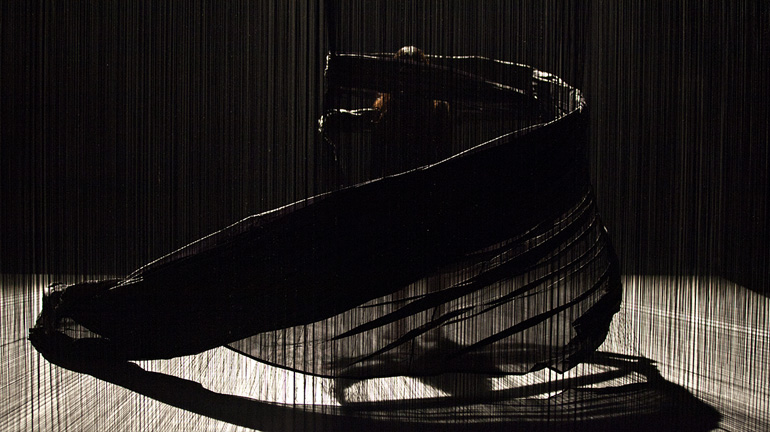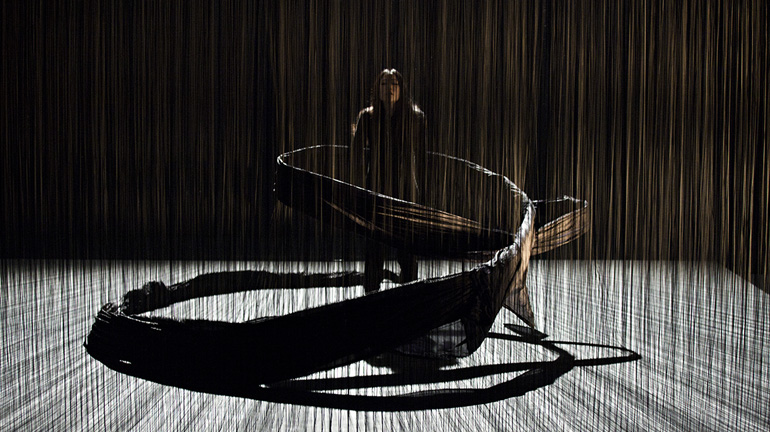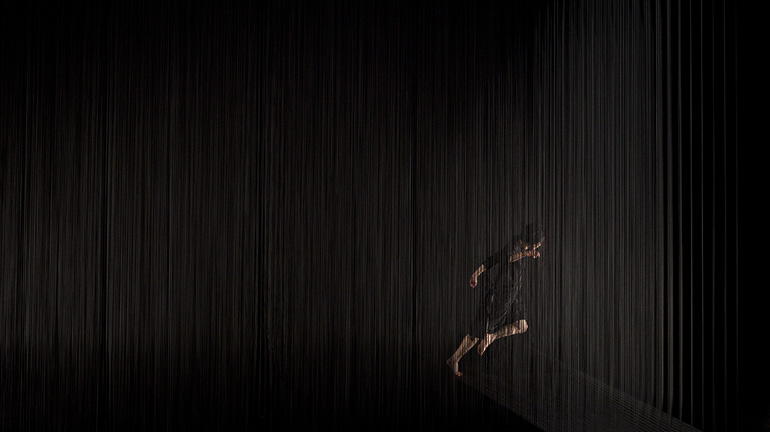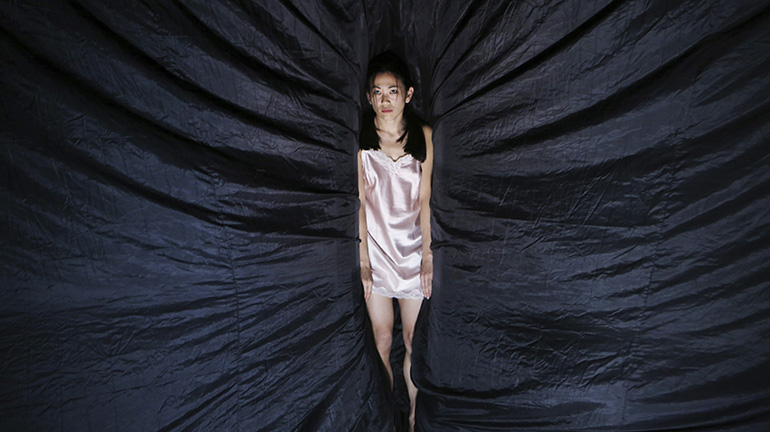de page
Plexus
PLEXUS
A PIECE BY AURÉLIEN BORY FOR KAORI ITO (CREATION 2012)
Plexus comes from the late period Latin and means « intertwining ». Later on, the ordinary sense of the term used in the context of anatomy meant « the network of nerves or blood vessels ». The very definition of the word refers to the muscles’ inner mechanics : the impulses from the nervous system and the flow of oxygenated blood, as well as the external mechanics of dance : intertwinings of movements, driftings, bodies and body parts.
The way I intended to portray Kaori Ito mostly implied portraying her body. I’m not interested in an anatomical study, but in the memory of a body substantially shaped by dance ; I care about the innermost marks her art has carved in her living body. How has her every cell taken part in this wonderful network of muscle tissue ? How has dance shaped, sculpted, and eventually expanded or crippled her innerspace ? Kaori Ito has worked with many different choreographers, each of them having singular, sometimes opposed, sets of aesthetics.
She has been subjected to opposite influences, she has been caught and torn between various artistic choices. These strained have crossed her body. The external entity of dance has entered her. Plexus deals with this dialogue between Kaori’s innerworld and the outside world. Isn’t this dialogue one of the quintessential features of the universal human experience ? Is this dialectic the architect of our innerself ? or is it the hub of our frailties?
With this upcoming project, my wish is to continue with the series of women portraits that began in 2008 with Stephanie Fuster in Questcequetudeviens ?. Yet again, I opted for a dancer as my model : the Japanese Kaori Ito. My aim is to tackle dance as an intimate assessment of the innermost self. Once more I will rely on the work and the artistic career of the dancer ; with Kaori Ito, as it was already the case with Stéphanie Fuster, her path can be explored in the light of its various displacements.
Kaori Ito was born in Japan. That’s where she became a dancer, she then pursued her training in New York, and finally arrived in Europe where she has worked with renown choreographers like Angelin Preljocaj, Philippe Decouflé, James Thierrée and Alain Platel. She settled down in Paris, and has since experimented distance from home like a long-lasting, yet chosen path, in order to carry on with her dancing career.
Aurélien Bory
For hours I would stand quite still, my two hands folded between my breasts, covering the solar plexus.... I was seeking and finally discovered the central spring of all movement.
Isadora Duncan
Our ancestors, forced to live in dark rooms, presently came to discover beauty in shadows, ultimately to guide shadows towards beauty's ends.
Junichiro Tanizaki

Plexus casts a spell over the stage at Abbesses Theatre in Paris.
16 January 2014
A fine jewel of optical theatre which is a cross between magic, the art of puppetry and cinema.
A black hole, a forest, a cyclone. A woman, a puppet, a ghost. Plexus, a solo devised as a coming-of-age tale by stage director Aurélien Bory for Japanese dancer Kaori Ito, casts a spell over the stage at Abbesses Theatre in Paris. In the rain or dazzled by an electric light, we follow the journey of a woman who fights against the elements to, ultimately, become a more coherent part of them.
With Plexus, a hollowed-out portrait of Kaori Ito, Aurélien Bory produces a fine jewel of optical theatre which is a cross between magic, the art of puppetry and cinema. With a mobile stage and five thousand Nylon threads, the mirage takes shape. Under the bright lights, the show’s textures inverse and metamorphose. Hard becomes soft, the immobile suddenly gathers speed, and metal explodes into jets of light. The luxurious stage dressing and design of Plexus sometimes succeeds in suggesting an organic, cosmic environment, a hollow space in which the female character can also turn herself into wood or smoke. And it is at the crossroads of these universes – at first sight incompatible – that this show, almost a performance-installation, finds its incomparable charm.
This solo provides the audience member with the perfect platform for an ideal portrait of Kaori Ito. She was discovered in 2003 in Tokyo, an insect-like woman with red hair, in Philippe Decouflé’s show Iris. Since then, this 34-year-old artist, trained in classical dance from the age of 5, has pursued elegant partnerships with the likes of Angelin Preljocaj, James Thierrée, Alain Platel and Denis Podalydès.
She has also been choreographing her own shows since 2008. And here she is in Plexus, a puppet-woman who frees herself by taking a journey through the skies. Under the influence of Japanese Shinto mythologies, the earth-dweller with iron boots also lives surrounded by ghosts. The history of the Sun Goddess, who disappears into a cave, leaving the planet in darkness, surely spoke to Aurélien Bory, influencing the idea for a cage of wires and the general atmosphere of the show.
After Questcequetudeviens?, the delicate and subtle portrait of flamenco dancer Stéphanie Fuster that he created in 2008, Aurélien Bory persists in a miniaturist vein. He counter-balances his fondness for more solid group productions while affirming his talent for the use of stage props.
Whether it is the “trap wall” of Plan B (2003), his first success and still on tour, or the marquee cloth of Géométrie de caoutchouc (2011), Bory confronts the space first of all. A former student of physics and spatial architectural acoustics, he devises scenographic landscapes that are a determining factor of the performance, on which he can peg his stage director-cum-juggler’s gestures. An existential airlock, a power struggle, a philosophical metaphor: these settings pin down various themes and issues by generating a theatre of situations, images and gestures that are different every time. Although the choreography proves to be a little repetitive in Plexus, it hits the nail on the head when depicting the fight for freedom and identity that marks Kaori Ito’s journey.
Rosita Boisseau
A network of nerves of vessels in the body.
Oxford Dictionary
DISTRIBUTION
With Kaori Ito
Design, scenography and direction Aurélien Bory
Choreography Aurélien Bory and Kaori Ito
Music Joan Cambon
Light design Arno Veyrat
Stage manager Thomas Dupeyron
Sound design Stéphane Ley
Costumes Sylvie Marcucci
Dramaturgy consultant Taïcyr Fadel
Set technical conception Pierre Dequivre
Prototyp construction Pierre Gosselin
Set construction : Atelier de la Fiancée du Pirate – Toulouse
Machinery Marc Bizet
Technical Director Thomas Dupeyron
Light Manager Arno Veyrat
Sound Manager Sylvain Lafourcade
Head of Production Florence Meurisse
Production Manager Clément Séguier-Faucher
Press Plan Bey Agency
PRODUCTION compagnie 111- Aurélien Bory
COPRODUCTION Le Grand T théâtre de Loire Atlantique – Nantes, Théâtre Vidy – Lausanne, Théâtre de la Ville – Paris, Le Parvis scène nationale Tarbes Pyrénées, Les Théâtres de la Ville de Luxembourg, La Coursive scène nationale – La Rochelle, Agora pôle national des arts du cirque – Boulazac
Residencies and rehearsals Le Grand T théâtre de Loire Atlantique – Nantes, Théâtre Garonne scène européenne – Toulouse, Théâtre Vidy – Lausanne
With the help of L’Usine Centre national des arts de la rue et de l’espace public – Tournefeuille Toulouse Métropole.
Compagnie 111 – Aurélien Bory is under funding agreement with the Regional Directorate for Cultural Affairs Occitanie / French Ministry of Culture and Communication, Region Occitanie / Pyrénées – Méditerranée and the City council of Toulouse. It is supported by the Departmental Council of Haute-Garonne.





